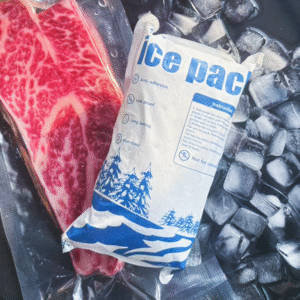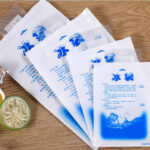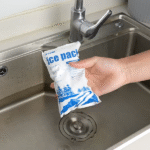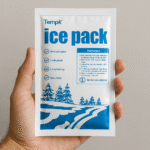What is a cold chain? Secara sederhana, a cold chain is the system used to store and move products that require precise temperature control. It involves specialized equipment, monitoring and processes that keep goods like vaccines, fresh foods and specialty chemicals safe from production to consumption. According to an industry guide, cold chain logistics refers to the specialised storage and transport of temperature sensitive goods and uses equipment and procedures to maintain required temperaturessafetyculture.com. It safeguards quality, safety and integrity until products reach their destination, preserving value and protecting public healthsafetyculture.com.

Definition and importance: why controlling temperature matters across industries and how a cold chain works.
Core components: the storage, angkutan, packaging and monitoring technologies that make a cold chain possible.
Key sectors and temperature ranges: the industries that rely on cold chains and the temperature ranges they require.
Best practices, challenges and 2025 tren: how to build a robust cold chain, mitigate common problems and prepare for innovations such as artificial intelligence and sustainability.
By the end of this article you’ll see how a well designed cold chain protects your products, reduces waste and supports compliance.
What Is Cold Chain Logistics?
Defining the cold chain
A cold chain is an end to end temperature controlled supply chain. It encompasses all activities involved in moving temperature sensitive goods from production to consumption. One glossary defines cold chain logistics as managing products that require temperature controlled handling during storage, transportation and distribution. The goal is to maintain a specific temperature range throughout the entire supply chain to ensure product integrity. Without this precision, items like vaccines, produk susu, seafood and even flowers can lose effectiveness or spoil.
Why the cold chain matters: Temperature fluctuations degrade quality, safety and value. Even short deviations can result in spoiled food or ineffective medications. Effective cold chains preserve product quality, enable regulatory compliance and protect consumer healthsafetyculture.com. Customer satisfaction and brand reputation rely on delivering safe, high quality goods.
Components of a cold chain
Building a reliable cold chain requires several interlocking components, each designed to prevent temperature excursions and product damage. Below is an overview of these elements and what they mean for your operations.
| Komponen | Keterangan | Apa artinya bagimu |
| Penyimpanan yang dikontrol suhu | Facilities like refrigerated warehouses, walk in cold rooms, blast freezers and mobile units provide precise environments across temperature zones. Sophisticated insulation, ventilation and monitoring systems are standardsafetyculture.com. | Choosing the right storage reduces energy waste, extends shelf life and keeps inventories compliant with regulations. Consider modular cold rooms or scalable third party warehouses if your demand fluctuates. |
| Specialized transportation | Truk berpendingin, insulated air freight containers, thermal pallets and last mile coolers keep goods within required ranges during transit. | Invest in vehicles with onboard refrigeration, GPS and sensors. Optimized routes and contingency plans reduce delays and spoilage. |
| Advanced packaging | Paket gel, bahan perubahan fase, insulated shippers and eco friendly materials insulate products and prevent thermal shock. | Select packaging based on duration, sensitivitas iklim dan produk. Sustainable materials can reduce waste and appeal to eco conscious customers. |
| Pemantauan & pelacakan | Pencatat data, RFID sensors, GPS and IoT devices provide real time data on temperature, kelembaban dan lokasi. Cloud platforms deliver alerts and analytics. | Continuous monitoring allows you to respond quickly to deviations. Use dashboards for visibility across your supply chain and to meet compliance requirements. |
| Prosedur operasi standar (Sops) | Documented handling, loading/unloading and incident response protocols ensure consistency. Training staff and routine inspections are essentialsafetyculture.com. | Develop SOPs tailored to your products and train employees regularly. Clear processes reduce human error and support audit readiness. |
Practical tips for setting up your cold chain
Assess product sensitivity: Categorize goods by their optimal temperature range using guidelines such as ultra cold (−80 °C to −60 °C), beku (−25°C hingga −10°C), dinginkan (2 °C hingga 8°C) dan lingkungan (15 °C to 25 °C). This classification informs your equipment choices.
Invest in the right infrastructure: Modernize storage facilities with efficient insulation and backup power. Consider mobile cold units for remote operations or emergencies.
Gunakan kemasan yang cerdas: Incorporate gel packs, phase change materials and insulated containers to maintain temperatures during handoffs or last mile deliveries.
Implement continuous monitoring: Menyebarkan sensor IoT, data loggers and cloud dashboards to track conditions in real time. Alert systems prevent minor issues from becoming costly losses.
Document and train: Develop SOPs that cover routine operations and emergency response. Train all staff involved in storage and handling to reduce errors and improve accountabilitycdc.gov.
Contoh kasus: A small biotech company shipping insulin successfully reduced spoilage by adopting refrigerated containers with built in sensors. By monitoring temperatures throughout transit and using gel based packaging, they maintained a consistent 2–8 °C range, reduced product loss and improved customer satisfaction. Regular staff training on SOPs ensured proper handling at every stage.
Why the Cold Chain Matters
Protecting product quality and safety
The cold chain is about more than just keeping things cold—it’s about preserving value, meeting regulations and protecting consumers. Maintaining temperature consistency prevents microbial growth, enzymatic reactions and potency loss. Spoiled goods lead to returns, complaints and lost trust. In industries like pharmaceuticals and food, non compliance can result in fines or product recalls.
Manfaatnya meliputi:
Umur simpan yang diperpanjang: Precise temperature control slows spoilage and maintains nutritional or therapeutic value.
Kepatuhan Pengaturan: Compliance with quality assurance standards, Praktik Distribusi yang Baik (PDB) and food safety regulations protects your business from legal penaltiessafetyculture.com.
Public health and trust: Delivering untainted products reinforces your brand’s commitment to consumer safety and can foster long term loyaltysafetyculture.com.
Industries that depend on cold chains
Multiple industries rely on cold chains to safeguard products and comply with strict regulations. Understanding the nuances of each sector can help you tailor solutions and avoid pitfalls.
| Industri | Examples of products | Kisaran suhu khasinboundlogistics.com | Pentingnya |
| Makanan & minuman | Fresh meat, hidangan laut, susu, frozen dinners, produk segar | Chilled 2 °C–8 °C for fresh meats and dairy; Frozen −25 °C to −10 °C for frozen foods | Mencegah pembusukan, reduces food waste and ensures food safety. Cold chains enable “farm to fork” integrity and meet consumer demand for qualityclickpost.ai. |
| Farmasi & Perawatan kesehatan | Vaksin, insulin, Biologi, plasma darah | Often chilled 2 °C–8 °C; some vaccines require ultra cold −80 °C to −60 °C | Preserves potency and efficacy. Even small temperature excursions can render drugs ineffective, making compliance with GDP and WHO guidelines vitalclickpost.ai. |
| Bahan kimia & industri | Industrial reagents, bahan kimia khusus | Range varies; many require cool or ambient (15 °C–25 °C) kondisi | Maintains stability and prevents hazardous reactions. Compliance with hazardous material regulations is criticalclickpost.ai. |
| Bunga, kosmetik & specialty goods | Potong bunga, high end teas, cosmetic serums | Chilled 2 °C–8 °C or cool ambient 15 °C–25 °C | Preserves aesthetic and functional qualities. Maintaining humidity and avoiding temperature spikes reduces waste and returnsclickpost.ai. |
Kunci takeaways: Food and pharma sectors drive most cold chain investment, but emerging segments such as florals and specialty retail also rely heavily on temperature control. By understanding each sector’s requirements, you can choose appropriate equipment and tailor SOPs accordingly.
Real world advice for different industries
Food producers: Use high performance blast freezers and maintain separate zones for chilled and frozen goods to avoid cross contamination. Monitor humidity to keep produce crisp.
Perusahaan Farmasi: Adopt redundant refrigeration units and backup generators. Equip shipments with IoT devices to ensure chain of custody tracking and to satisfy regulators.
Chemical manufacturers: Consult hazardous materials guidelines and invest in packaging that prevents leaks. Keep temperature logs for audits.
Floral or cosmetic retailers: Use insulated packaging with gel packs and plan shorter, more frequent deliveries to maintain freshness. Real time monitoring helps adjust routes based on weather or traffic.
Contoh praktis: A mid sized dairy producer increased product shelf life by investing in insulated pallet covers and sensor equipped reefer trucks. The additional cost was offset by reducing spoilage by 15% and meeting new food safety standards. Customers reported fresher products, improving brand loyalty.
Building an Effective Cold Chain
Steps for designing a robust system
Map the product journey: Identify all points where temperature control is needed—from manufacturing to end user. Use this to select appropriate storage, packaging and transport.
Define temperature requirements: Refer to industry guidelines for each product category and choose equipment that can maintain those ranges.
Invest in infrastructure: Upgrade warehouses with energy efficient insulation and backup power. Consider mobile cold rooms for flexible capacity and remote locations.
Select the right transport modes: Choose between refrigerated trucks, railcars, reefer ships or cold chain air cargo based on distance, volume and cost.
Adopt advanced monitoring: Install sensors, RFID tags and GPS systems to track temperatures and location throughout transit.
Create SOPs and train staff: Document handling procedures, emergency responses and quality checks. Train all employees involved in storage and transportcdc.gov.
Choosing the right temperature range
Selecting suitable temperature categories helps you align infrastructure with product needs. The table below summarizes common ranges and examplesinboundlogistics.com:
| Temperature zone | Range | Example products | Impact if mismanaged |
| Ultra cold | −80 °C to −60 °C | Vaksin mRNA, advanced biologics | Potency loss can render vaccines ineffective and lead to revaccination programscdc.gov. |
| Beku | −25°C hingga −10°C | Es krim, daging beku, hidangan laut, Dosis vaksin | Partial thawing refreezes moisture, leading to texture changes and contamination. |
| Dinginkan | 2 °C hingga 8°C | Fresh meat, susu, buah, general pharmaceuticals | Bacterial growth accelerates quickly outside this range, shortening shelf life. |
| Cool/ambient | 15 °C to 25 °C | Kosmetik, tablets, industrial materials | Higher temperatures degrade potency; low temperatures may cause crystallization. |
Kiat pengguna: Keep a temperature log for each batch and install alarms for threshold breaches. Use backup cooling options like dry ice or PCM packs during power outages. When shipping multi temperature goods, separate them using partitioned containers.
Quality control and compliance
Maintaining an effective cold chain requires more than just equipment—it also demands rigorous quality control and adherence to regulations.
Pemantauan waktu nyata: Set up continuous environmental monitoring systems that track temperature and humidity across all stages. Cloud dashboards enable proactive interventions.
Analisis Bahaya dan Titik Kendali Kritis (Haccp): Use HACCP systems to identify hazards and control pointssafetyculture.com. This systematic approach reduces risks and ensures compliance with food safety standards.
Kepatuhan Pengaturan: Follow ISO 9001 for quality management, Good Distribution Practices for pharmaceuticals and international transport protocols such as IATA guidelinessafetyculture.com. The CDC notes that an effective vaccine cold chain relies on well trained staff, reliable equipment and accurate inventory managementcdc.gov.
Staff training and SOPs: Develop written SOPs that include routine and emergency procedurescdc.gov. Ensure all personnel are trained on these procedures and on using monitoring equipmentcdc.gov.
Dokumentasi: Maintain complete temperature logs and quality reports for audits. Accurate records help with recall management and demonstrate compliance.
Challenges and Best Practices
Common challenges in cold chain logistics
Despite technological advancements, cold chains still face obstacles that can compromise product integrity and increase costs. The main issues include:
Kunjungan suhu: Delays at customs, equipment malfunctions or poor packaging can cause products to fall outside the required range. Mitigation involves real time monitoring, redundant refrigeration units and optimized route planning.
Kepatuhan Pengaturan: Strict regulations require extensive documentation and validation. Non compliance can lead to fines, recalls or legal action.
Biaya operasional yang tinggi: Running a cold chain is capital intensive due to specialized equipment, energy usage and monitoring systems. Cost saving measures include shipment consolidation, reusable packaging and warehouse optimization.
Infrastructure gaps: Developing regions may lack adequate cold storage and transport options. Investing in mobile units or partnering with third party providers helps bridge these gaps.
Supply chain disruptions: Natural disasters, geopolitical events and pandemics can halt movement and break cold chains. Building resilience through diversified suppliers and emergency plans is essential.
Best practices for overcoming challenges
| Tantangan | Praktik terbaik | How it helps |
| Kunjungan suhu | Implement real time monitoring and alert systems; build redundancy into cooling equipment; optimize delivery routes. | Provides immediate notifications when temperatures deviate, allowing fast corrective actions and reducing product loss. |
| Kepatuhan Pengaturan | Keep complete temperature logs; validate processes; stay updated with industry specific regulations. | Demonstrates adherence during audits, reduces legal risks and ensures product quality. |
| Cost management | Konsolidasikan pengiriman; invest in reusable packaging; optimize warehouse layout for energy efficiency. | Lowers operational expenses while maintaining product integrity and sustainability. |
| Infrastructure gaps | Use mobile cold units or lease third party storage and transport; invest in renewable energy systems in remote areas. | Expands coverage into underserved regions and improves supply chain resilience. |
| Supply chain disruptions | Kembangkan rencana darurat; maintain strategic stock; diversify suppliers and transportation modes. | Reduces vulnerability to disruptions and ensures continuous supply. |
Pertimbangan peraturan
Cold chain operations must comply with various international, national and industry specific standards.
ISO 9001 and HACCP: These frameworks guide quality management and food safety proceduressafetyculture.com.
Praktik Distribusi yang Baik (PDB): GDP governs the distribution of pharmaceuticals and ensures that medicines are handled consistently to maintain qualitysafetyculture.com.
International transport protocols: Untuk kargo udara, IATA’s Perishable Cargo Regulations and ATP certification for perishable food transport define temperature control requirementssafetyculture.com.
Vaccine guidance: The CDC states that a vaccine cold chain includes all equipment and procedures from manufacturing to administrationcdc.gov. It emphasizes training staff, reliable equipment and accurate inventory managementcdc.gov.
Following these standards not only ensures compliance but also builds customer confidence and minimizes risks.
2025 Tren dan Inovasi dalam Logistik Rantai Dingin
Overview of emerging trends
Industri rantai dingin berkembang pesat. Analysts predict that the global cold chain logistics market will grow from about US$324 billion in 2024 to over US$862 billion by 2032, reflecting a compound annual growth rate of around 13%. Several factors drive this growth, including new consumer demands, regulatory changes and technological advances. The following trends will shape cold chain logistics in 2025 dan seterusnya:
Keberlanjutan dan logistik ramah lingkungan: Cold chain operations are energy intensive, and companies face increasing pressure to reduce their carbon footprints. Oleh 2025, innovations in green logistics, energy management and resilience to climate change are becoming standard. The adoption of renewable energy sources, biofuels and energy efficient refrigeration systems helps reduce emissions. Initiatives like the Move to -15 °C coalition promote energy efficient refrigeration and collaborative sustainability practices. Investment in green infrastructure not only meets corporate social responsibility goals but also lowers operating costs.
Artificial intelligence and automation: AI is transforming warehouse operations, route planning and maintenance. The Emergent Cold article notes that AI provides predictive insights for optimizing warehouse operations, reducing downtime and improving inventory control. Robots and automated systems optimize space and energy use, while predictive maintenance avoids equipment failures. Real time monitoring and IoT sensors offer dynamic route optimization and hazard detection.
Digital visibility and tracking: Demand for better visibility drives investment in real time monitoring software and cloud platforms. Maersk emphasises that supply chains will invest heavily in software for visibility and compliance. This includes blockchain for secure record keeping, GPS tracking for shipments and analytics dashboards for proactive decision making. Enhanced visibility reduces risk and improves customer confidence.
Evolving product portfolios: The rise of plant based foods, biologics and specialty goods requires cold chains to adapt to new temperature profiles and handling requirements. Maersk highlights that new products will drive changes in supply chain requirements, including more local sourcing and dedicated capacity. Companies must build flexibility into their networks to handle diverse products.
Infrastructure upgrades and port centric distribution: Aging facilities are being replaced with automated, energy efficient warehouses. Lebih besar, port centric distribution hubs reduce transit times and environmental impact. Built to suit (BTS) solutions customize cold storage facilities for specific customer needs. Outsourcing cold storage operations can reduce capital expenditure and speed up expansion.
Supply chain resilience and antifragility: The pandemic, extreme weather events and geopolitical tensions have underscored the need for resilient networks. Businesses are partnering with logistics providers to integrate supply chains and enhance visibility. They are also maintaining strategic stock and diversifying transport routes to mitigate disruptions.
AI and real time monitoring
AI plays a central role in predictive analytics, automation and quality control. According to Emergent Cold, AI optimizes warehouse layouts, predicts maintenance needs and improves safety. Real time data from IoT sensors allows dynamic adjustments to routes and temperatures, mengurangi limbah. Integration with blockchain ensures tamper proof documentation and enhances traceability.
Sustainability and green initiatives
Green logistics is not optional. Cold chain operations must adopt renewable energy and reduce emissions to comply with global climate goals. Emergent Cold notes that companies are implementing biofuels, solar and wind energy at their facilities and using more efficient refrigeration technologies. The Move to -15 °C initiative shows that industry players are collaborating to standardize energy efficient refrigeration. Selain itu, reducing food loss and waste is vital; the article points out that over one billion tons of food are wasted each year, accounting for 8–10% of global greenhouse gas emissions. A robust cold chain helps address this issue by preserving product quality and reducing post harvest losses.
Expanded partnerships and resilience
To handle increasing demand and complexity, businesses are forming partnerships with logistics providers and technology companies. TQ Logistics emphasises that more businesses are integrating cold chain logistics with partners to improve visibility and cooperation. Building antifragility involves diversifying suppliers, investing in advanced forecasting and maintaining buffer inventories. The future cold chain will be more collaborative, data driven and adaptive.
Pertanyaan yang sering diajukan
Q1: What is a cold chain in simple terms? A cold chain is a temperature controlled supply chain that includes all equipment and procedures used to store and transport vaccines, food and other temperature sensitive goodscdc.gov. It starts at manufacturing and ends when the product is delivered to the user, ensuring that products stay within their safe temperature range.
Q2: Which industries depend on cold chain logistics? Makanan dan minuman, Farmasi, bahan kimia, cosmetics and floral sectors all rely on cold chain logistics. Each industry has specific temperature and handling requirements to maintain product quality and safetyclickpost.ai.
Q3: What are common temperature ranges in a cold chain? Common zones include ultra cold (−80 °C to −60 °C) for mRNA vaccines, beku (−25°C hingga −10°C) for ice cream and seafood, dinginkan (2 °C hingga 8°C) for fresh foods and pharmaceuticals, dan lingkungan (15 °C to 25 °C) for cosmetics and some industrial materials. Selecting the correct range preserves quality and prevents spoilage.
Q4: How can businesses reduce cold chain costs? Konsolidasikan pengiriman, invest in reusable packaging, optimize warehouse layouts for energy efficiency and use shared or third party cold storage. These strategies lower operational costs without sacrificing quality.
Q5: What technological innovations are shaping cold chain logistics in 2025? Kecerdasan buatan, Sensor IoT, blockchain and energy efficient refrigeration are transforming the industry. AI optimizes warehouse operations and route planning, while renewable energy and green logistics initiatives reduce carbon footprints. Enhanced visibility and collaborative partnerships also drive resilience and efficiency.
Ringkasan dan Rekomendasi
Dalam ringkasan, a cold chain is a comprehensive system designed to maintain safe temperatures for sensitive products from production to consumption. By combining temperature controlled storage, specialized transport, Kemasan Cerdas, real time monitoring and well designed SOPs, businesses can safeguard product integrity and comply with regulations. Critical industries—including food, Farmasi, chemicals and specialty goods—depend on cold chains to prevent spoilage, reduce waste and protect consumer health. Emerging technologies like AI and blockchain, along with sustainability initiatives and port centric distribution hubs, are reshaping the cold chain landscape.
Langkah selanjutnya:
Evaluate your current cold chain: Map your products’ temperature requirements and identify any gaps in infrastructure or monitoring.
Berinvestasilah dalam teknologi: Mengadopsi sensor IoT, cloud dashboards and AI driven analytics for better visibility and predictive maintenance.
Upgrade facilities: Retrofit warehouses with efficient insulation and renewable energy systems; consider outsourcing to modern third party providers if needed.
Train and document: Develop comprehensive SOPs and train staff regularly. Maintain complete temperature and quality records for audits.
Plan for resilience: Membangun kemitraan, diversify suppliers and develop contingency plans to manage disruptions.
If you’re looking to modernize your cold chain, now is the time to act. Reach out to experts who can assess your needs and recommend tailored solutions.
Tentang tempk
Tempk is a global leader in cold chain solutions, offering energy efficient refrigeration units, modular cold storage and real time monitoring technologies. Our team combines decades of experience in logistics, engineering and regulatory compliance to help businesses maintain product integrity and reduce waste. We focus on sustainability by integrating renewable energy and eco friendly packaging into our solutions. With facilities and partners across North America, Eropa dan Asia, we deliver scalable systems that grow with your needs.
Panggilan untuk bertindak: Contact our experts to assess your cold chain requirements and receive a customized plan. Whether you need to upgrade infrastructure, integrate AI driven monitoring or improve regulatory compliance, Tempk siap membantu. Let’s build a safer, greener cold chain together.























